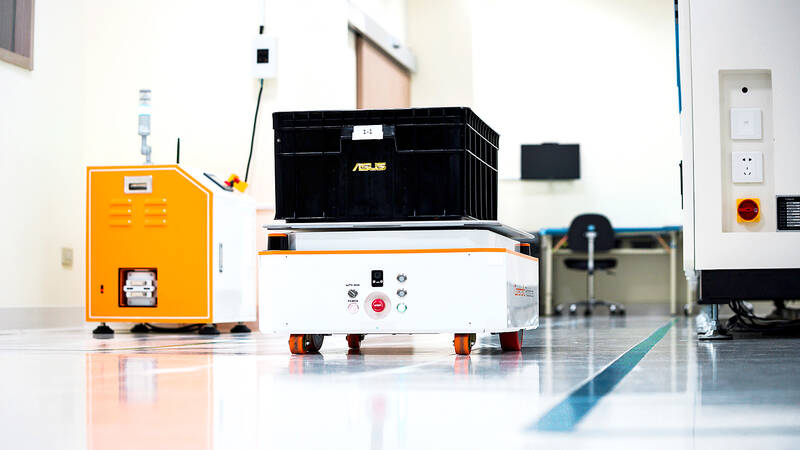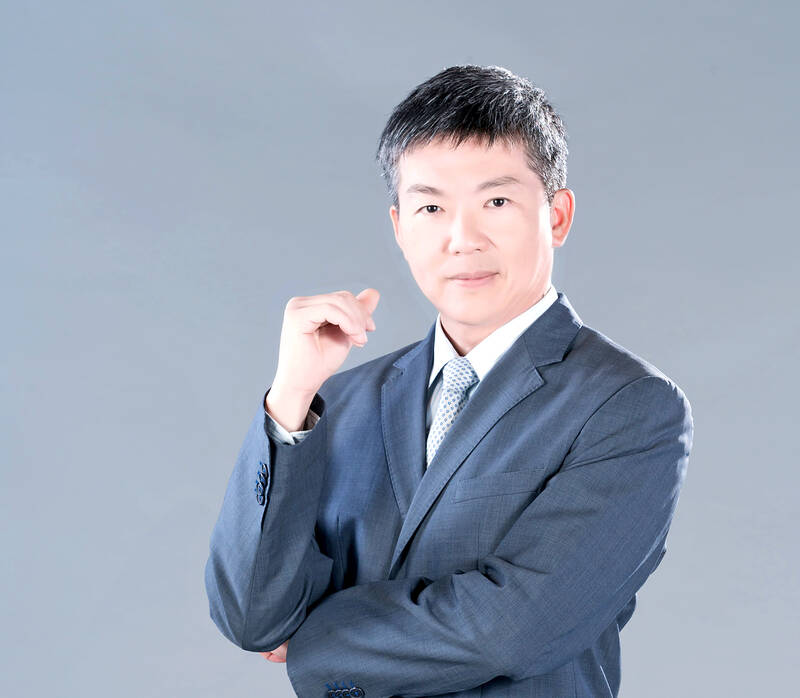Intel Corp’s exit of next-unit-of-computing (NUC) provides a boon for Asustek Computer Inc (華碩) to expand its mini-PC business at a faster pace than the segment’s average of 10 to 20 percent a year, as the world’s PC sales are dwindling during the post-COVID-19 pandemic era.
Asustek set the internal growth target after officially taking over Intel’s NUC product lines last week, making the palm-sized PCs one of the new growth drivers alongside the company’s new server and commercial computer businesses.
With the new NUC business unit, the PC vendor is seeking to gain a stronger foothold in the inconspicuous segment of industrial computers by integrating Intel’s popular NUCs with its existing mini-PC series.

Photo courtesy of Asustek Computer Inc
When it comes to PCs, most people think of consumer and commercial computers, while overlooking industrial or embedded computers, Jackie Hsu (許祐嘉), co-head of Asustek’s Open Platform Business Group and AIoT Business Group, said in an exclusive interview with the Taipei Times on Tuesday at Asustek’s headquarters in Taipei’s Beitou District (北投).
Industrial computers enjoyed a decent and stable growth rate of a double-digit percentage annually over the past few years in terms of unit shipments, outpacing traditional PCs, Hsu said.
Global PC shipments are expected to contract 13.7 percent to 252 million units this year as demand plummeted from the booms created by remote work and school demand due to the COVID-19 pandemic, according to IDC’s forecast.

Photo courtesy of Asustek Computer Inc
With wider coverage from industrial computers, commercial and gaming computers, mini-PCs registered robust growth of 10 to 15 percent a year over the past few years, Hsu said.
It would be a reasonable target for Asustek to outgrow the overall mini-PC segment, Hsu said.
Hsu is a member of a cross-division task force created to discuss the takeover of Intel’s NUC business intensively with their Intel counterparts, prior to the US chip giant’s announcement in July that it would stop providing direct investment for the palm-sized PC lines. He oversees the new NUC business unit jointly with another Asustek executive.
“We are very optimistic about it,” Hsu said. “We received positive feedback from our clients from the US, Europe and Asia, indicating the market also shows similar optimism.”
Mini-PCs are a relatively stable segment and less vulnerable to market changes than traditional PCs, as corporations tend to continue investing in machines that help improve operational efficiency to boost earnings during market upturns and downturns, Hsu said.
Since Intel launched the first NUCs a decade ago, mini-PCs have gained popularity among technology professionals and business users, given the flexibility of adding their own memory, storage and operating system similar to DIY kits. Intel has shipped about 10 million units of NUC products since then.
“With the inclusion of Intel’s NUCs, Asustek will have the most comprehensive offerings among companies with similar products. That gives us a competitive edge,” Hsu said.
The Taiwanese PC vendor inked an agreement on Monday to obtain the right to design, manufacture and sell Intel’s 10th through 13th-generation NUC product lines. A high percentage of Intel’s NUC engineers also transferred to Asustek, bringing the company’s NUC headcount to about 160, Asustek said.
Asustek is slated to launch the first Asus NUC in January.
However, Asustek is not in a rush to roll out Republic of Gamers-branded (ROG) NUCs due to time constraints, the company said.
ROG is Asustek’s gaming-related products brand. It requires a longer period of product design to meet a series of requirements and criteria specially designed for ROG-brand products, Hsu said.
Asustek has an ROG committee to review any new products that intend to carry the brand, Hsu said, adding that the rules have been in place for more than 10 years.
The ROG committee is formed by people from different units of the company, he said.
The company targets four major vertical industries — smart manufacturing, healthcare, retail and smart city infrastructure — to develop the new Asus NUC series.

The New Taiwan dollar is on the verge of overtaking the yuan as Asia’s best carry-trade target given its lower risk of interest-rate and currency volatility. A strategy of borrowing the New Taiwan dollar to invest in higher-yielding alternatives has generated the second-highest return over the past month among Asian currencies behind the yuan, based on the Sharpe ratio that measures risk-adjusted relative returns. The New Taiwan dollar may soon replace its Chinese peer as the region’s favored carry trade tool, analysts say, citing Beijing’s efforts to support the yuan that can create wild swings in borrowing costs. In contrast,

Nvidia Corp’s demand for advanced packaging from Taiwan Semiconductor Manufacturing Co (TSMC, 台積電) remains strong though the kind of technology it needs is changing, Nvidia CEO Jensen Huang (黃仁勳) said yesterday, after he was asked whether the company was cutting orders. Nvidia’s most advanced artificial intelligence (AI) chip, Blackwell, consists of multiple chips glued together using a complex chip-on-wafer-on-substrate (CoWoS) advanced packaging technology offered by TSMC, Nvidia’s main contract chipmaker. “As we move into Blackwell, we will use largely CoWoS-L. Of course, we’re still manufacturing Hopper, and Hopper will use CowoS-S. We will also transition the CoWoS-S capacity to CoWos-L,” Huang said

Nvidia Corp CEO Jensen Huang (黃仁勳) is expected to miss the inauguration of US president-elect Donald Trump on Monday, bucking a trend among high-profile US technology leaders. Huang is visiting East Asia this week, as he typically does around the time of the Lunar New Year, a person familiar with the situation said. He has never previously attended a US presidential inauguration, said the person, who asked not to be identified, because the plans have not been announced. That makes Nvidia an exception among the most valuable technology companies, most of which are sending cofounders or CEOs to the event. That includes

INDUSTRY LEADER: TSMC aims to continue outperforming the industry’s growth and makes 2025 another strong growth year, chairman and CEO C.C. Wei says Taiwan Semiconductor Manufacturing Co (TSMC, 台積電), a major chip supplier to Nvidia Corp and Apple Inc, yesterday said it aims to grow revenue by about 25 percent this year, driven by robust demand for artificial intelligence (AI) chips. That means TSMC would continue to outpace the foundry industry’s 10 percent annual growth this year based on the chipmaker’s estimate. The chipmaker expects revenue from AI-related chips to double this year, extending a three-fold increase last year. The growth would quicken over the next five years at a compound annual growth rate of 45 percent, fueled by strong demand for the high-performance computing